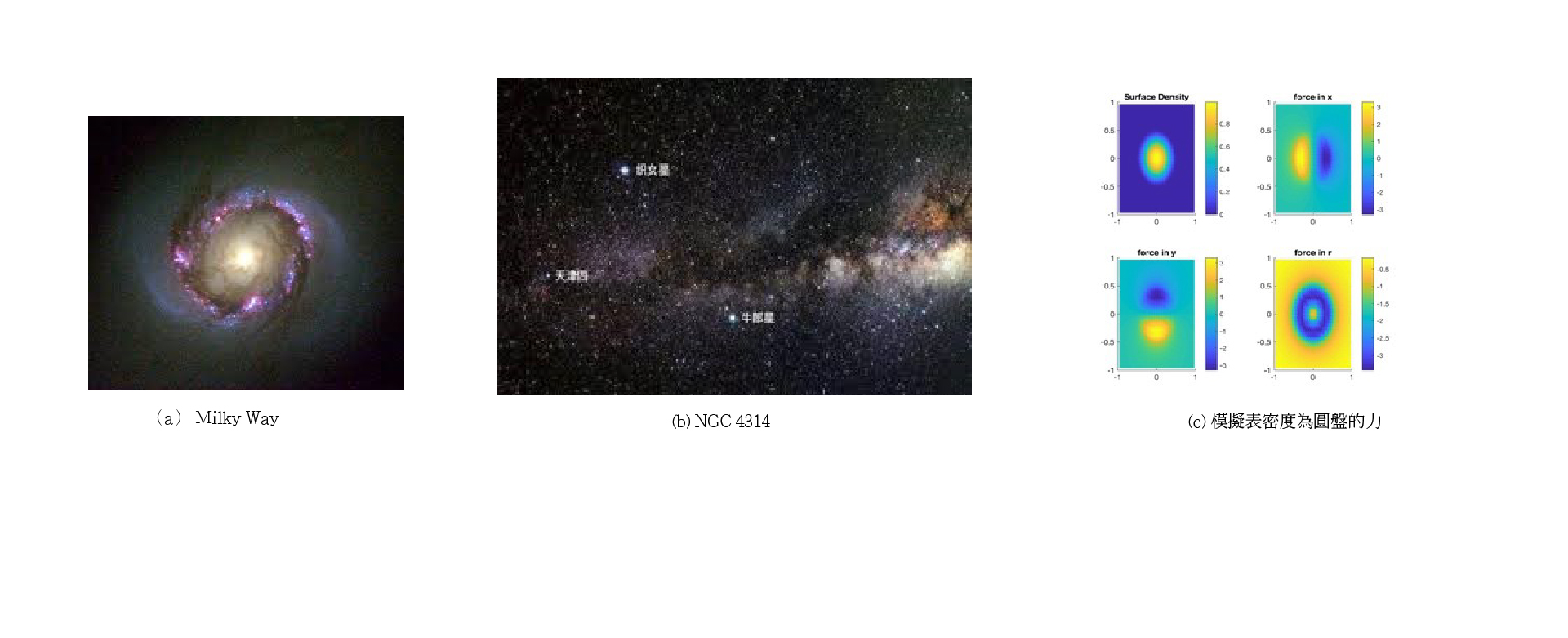Self-gravitational Force Calculation of High-order Accuracy for Infinitesimally Thin Gaseous Disks
On Valentine, you can see the Altair in Aquila and the Vega in Lyra in the sky. The Milky way where we live connects these two galaxies. There is an infinitesimal thin gaseous disk in the center of the Milky Way. Nowadays, the high resolution of telescopes makes scientists be more curious on the structure and activities of the galactic center region.
It is needed to be verified by theory and numerical simulations for observations of the physical mechanism under the influence of the gravity of stars and the self-gravity of the gaseous disk. Numerical simulations are significant to study the dynamic evolution of galaxies. However, the simulation requires to include both fluid and self-gravitational forces calculations. The time complexity of a direct numerical approach is growth in quadratic. For instance, if a simulation requires 1 days, then it takes 4 days for double grid zones. Furthermore, a simulation study of a galaxy, it is often necessary to simulate more than ten simulations to find an accepted result compared with the observations. Our goal is to find a fast and highly accurate method.
In 2014, Chien-Chang Yen, Ronald E. Taam, Ken Huai-Che Yeh, Kang C. Jea develop a method involving a calculation of the singular kernel integrals in analytic, and with the help of fast Fourier transform (FFT), the proposed method is of second-order accuracy and nearly linear complexity. The proposed method is used in the Antares codes developed by the Institute of Astronomy and Astrophysics, Academia Sinica. The research results obtained by applying this method mainly include Dr. Lien-Hsuan Lin and her doctoral dissertation on the galaxies NGC 6782, NGC 1097, NGC 1300, etc. For higher order accuracy more than second order, the time complexity will increase exponentially.
In 2016, Miss Rui-Zhu Wu and I used the spline functions as the basis functions on an expansion of surface density. We achieve higher accuracy than the second order remaining the same time complexity. On the other hand, there is no free lunch. We must calculate the required formulas in analytic before numerical simulations. The calculation has been simplified by Professor Hsiang-Hsu Wang in the Department of Physics of the Chinese University of Hong Kong. The theoretical analysis is done by Professor Ming-Cheng Shiue from the Department of Applied Mathematics, National Chiao Tung University.
This research has been published in the astronomical journal in 2019 May.
135 views

